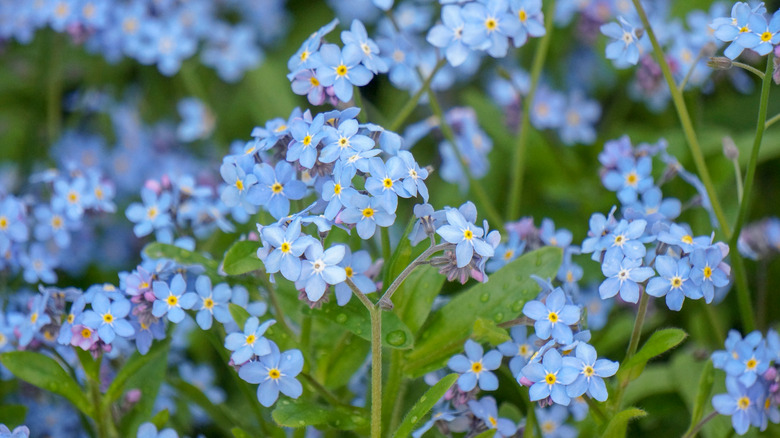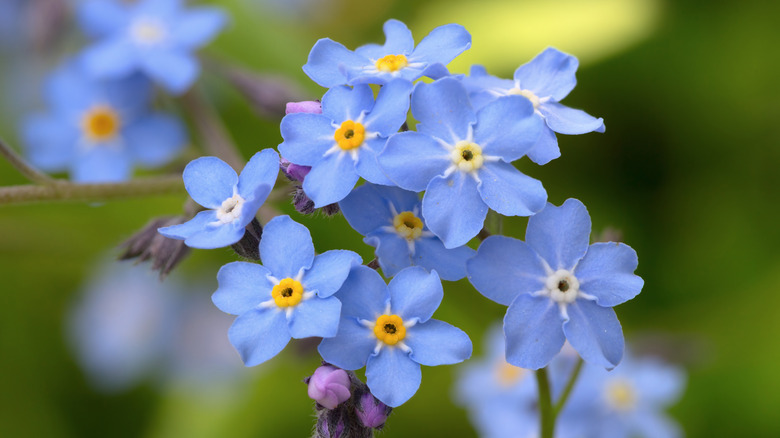The Delicate Blue Flowering Plant That Will Grow In Damp Soil
If you have a shady backyard, you know it can be hard to find flowering plants that do well. Most people have either dry shade or damp shade, based on the condition of the soil and location near water. If you have damp shade, and your soil stays fairly moist consistently, one excellent flower to add lovely blue color to your garden is the common but beautiful forget-me-not.
Forget-me-nots, whose botanical name is Myosotis sylvatica, get their unusual common name from a German folk legend. A young couple walking by a river saw the flowers growing on a small island. When the man tried to pick the flowers for his lover, he was swept away by the current, and before he fell, he tossed the flowers to his lover and shouted, "Forget me not!" or so the story goes. This story also associates the flowers with water and the places where they are often found growing in the wild — in damp woodlands and along streams and ponds.
Forget-me-nots are easy to grow and look great in a cottage-style or woodland garden, producing sprays of tiny, sky-blue flowers in mid-spring. In addition to the stunning blue flowers, they also occasionally have white or pale pink flowers. They're a very reliable spring bloomer and will reseed freely in the garden. Depending on the variety, they may behave as either annuals, biennials, or perennials; once established, the clumps of small oval leaves will grow slightly bigger each year.
Forget-me-nots spread freely
Although many gardeners love the masses of pale blue flowers that grow perfectly in shade in spring, some might consider forget-me-nots a bit of a nuisance. This is because they reseed very readily. Over time, they can fill in bare spots very well, or invade beds where they haven't been asked to stay. Once they're established in your garden, you will likely see new plants come up in the spring. However, these new plants have very shallow root systems and are easy to pull up.
Those shallow root systems also make forget-me-nots very easy to transplant. This is best done in early spring as the plants are waking up, or in summer after the plants have stopped flowering. Gently dig them up and replant where desired, in a partial shade spot with consistently moist soil. Give them a bit of water after transplanting them, and water lightly at the roots every day for a few days, especially if there's no rain.
Because forget-me-nots produce many tiny seeds, it can be hard to keep them from reseeding themselves. But the best way to keep them under control is to deadhead them after the colorful blooms have faded. The stems will grow tiny seeds. Once these dry out, the wind will carry them all over your garden! Snipping and discarding these stems (or saving the seeds if you wish) will help keep them from spreading too quickly.

